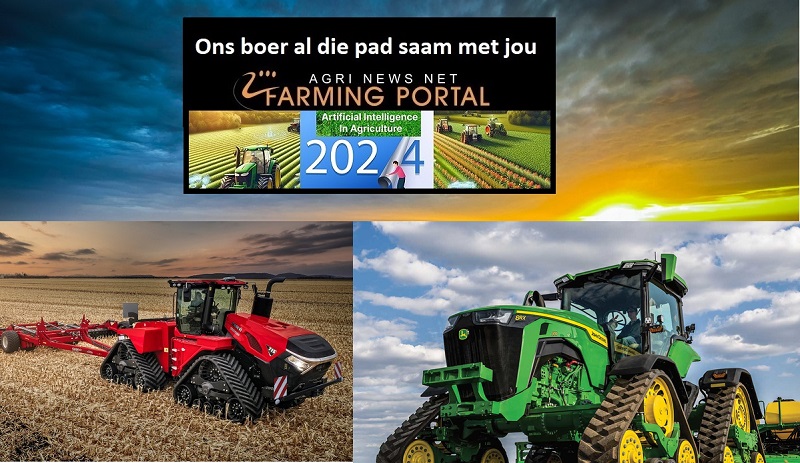The Southern Africa region has experienced agricultural trade friction in the past few years.
Namibia and Botswana placed a ban on the imports of South African vegetables and citrus. Simply put, the rationale from both Namibia and Botswana officials was that the import ban ensures that their domestic producers are not exposed to the South African competition, thus having space to rebuild for self-sufficiency.
- With all these countries under the Southern African Customs Union (SACU), such policy positions are outside the spirit of free trade. While South African fruit exports could be redirected to other markets worldwide, the vegetable industry had to bear the financial impact of the reduced regional demand. Beyond the trade restrictions being outside of spirit of the customs union, Botswana and Namibia also have limitations regarding their potential ability to produce sufficient high-quality vegetable products. Thus, there have been various reports of food inflation challenges in these countries.
- Fortunately, South Africa did not react with counter measures to the ban. We believe that the major objective should always be to enhance regional agricultural production and discourage the fragmentation these bans introduce. With a new administration under President Duma Boko, there is an opportunity to reverse the prohibitions of the previous administration and encourage stronger regional agricultural production and trade. The priority should be to ensure that the people of Botswana can access high-quality agriculture and food products.
- In the medium-to-long term, the focus could be on satisfying Botswana's ambition of increasing its domestic production where land capabilities permit. However, domestic ambitions should not trump the need for regional agricultural approach. If anything, Botswana could benefit from some of South Africa's technologies to improve its agriculture. We already have some cases of various countries in the region that benefit from South Africa's agricultural technologies. A case in point is the citrus industry, where research is primarily done in South Africa and shared with the Citrus Growers Association of Southern Africa members. Similarly, South Africa has imported some vaccines for the livestock industry from Botswana in the past few months.
- This example shows that cooperation could lead to effective regional agricultural development. The approach from each country should be to communicate its ambitions and not resort to trade-distorting mechanisms that undermine consumer welfare. Equally, South Africa, as a significant agricultural producer in the region, should continuously seek to broaden export markets in other areas, such as Asia and the Middle East, to benefit the Southern Africa region. The export growth in the coming years should focus on the Middle East while maintaining access to the existing markets. The Southern African countries are working to expand their agricultural production, so South Africa must focus on broadening access to new regions with potentially more robust demand. But this will not be an overnight effort, especially in the current climate of trade fragmentation.
- In essence, the Southern Africa region has an opportunity to reset its agricultural trade and production collaboration. The new administration in Botswana should ideally remove the ban on vegetable and fruit imports to ease domestic food inflation concerns. A similar approach from Namibia is critical. After that, the Ministers of Agriculture in the region should encourage knowledge sharing amongst agricultural stakeholders so the countries that intend to boost their production in the coming years can easily access the best technologies and know-how.
- If any SACU countries believe their agricultural industries are under pressure from exports from South Africa, there should be clear communication about such a matter so the exporters can provide space for domestic supplies. Southern Africa's agricultural collaboration could have been achieved without the trade confrontation. South Africa, as a large agricultural producer, should start the conversations with both the governments of Botswana and Namibia. The South African Department of Trade, Industry and Competition, along with the Department of Agriculture, must be at the forefront, supported by the Department of International Relations and Cooperation..
WEEKLY HIGHLIGHT
SA's primary agricultural employment improves in Q3, 2024
- While the 2023-24 mid-summer drought has been the central theme of the downbeat performance of South Africa's agriculture this year, we see a welcome positive change in the jobs data. Statistics South Africa data show that primary agriculture employment improved by 4% from the previous quarter to 935k jobs in the third quarter. However, from an annual perspective, the performance is weak, down 2% year-on-year. Still, the primary agricultural employment of 935k people is well above the long-term jobs of 799k. The poor annual performance mirrors the harsh summer season we are leaving behind.
- Some subsectors showing a quarterly increase in employment include livestock, horticulture, game hunting, and the production of organic fertilizers. Meanwhile, forestry and aquaculture recorded job losses from the year's second quarter.
- The Western Cape, Northern Cape, Eastern Cape, North West, Gauteng, and Limpopo showed significant quarterly job gains. The livestock and horticulture industry may have boosted the employment prospects in these provinces. Meanwhile, the Free State, KwaZulu-Natal and Mpumalanga showed job losses in the year's second quarter. The dominant types of agricultural activity in these provinces partly explain the job losses, especially in the Free State, primarily the grains and oilseed growing region.
- Overall, South Africa's agricultural sector remains crucial for employment creation in rural communities. However, the sector must be on a positive growth path to sustain the current jobs and create new job opportunities. In the near term, we see various constraining factors requiring policymakers' attention. These include resolving the port inefficiencies. The sector also struggles with poor rail and road infrastructure and worsening municipal service delivery. This must be an area of focus for the Government of National Unity, along with addressing rising crime incidents in some areas of the country.
WEEK AHEAD
What we are watching this week
- On the global front, today, the United States Department of Agriculture (USDA) releases its weekly US Crop Progress report. The US's 2024-25 maize harvest process is underway, with 95% of the crop harvested as of November 10, 2024. This is ahead of last season's pace, where 86% of the crop had been harvested by this time. Also worth noting is that 96% of the US soybeans had been harvested on November 10, 2024, compared with 94% at the same time last year. Moreover, the USDA will release its weekly US Grains and Oilseed Export Sales data on Thursday.
- On the domestic front, Statistics South Africa will publish its Consumer Price Index (CPI) data for October 2024 on Wednesday. After a slight increase to 4,1% in August 2024, South Africa's consumer food price inflation remained unchanged in September. However, there was a mild deceleration in some products' price inflation, including "bread and cereals", "meat", "sugar, sweets and desserts". The "oils and fats" are in deflation. The "milk, eggs and cheese" remained flat from the previous month. These moderating price trends were countered by the slight increase in the price inflation of "fish", "fruit", and "vegetables"; thus, leading to an unchanged headline consumer food price inflation in September 2024. The base effects of higher consumer food price inflation a year ago have contributed to the generally moderate trend of some products this year.
- Also, on Wednesday, SAGIS will release its weekly South Africa's Grains and Oilseeds Producer Deliveries data. In the case of maize, this week, we will receive a data release for the 29th week of the 2024-25 marketing year. In the previous release on November 8, South Africa's weekly maize producer deliveries were about 43k tonnes. This puts the 2024-25 maize producer deliveries at 10,36 million tonnes out of the expected harvest of 12,72 million tonnes. The 2024-25 soybean deliveries in the first 37 weeks of this new marketing year amounted to 1,76 million tonnes out of the expected harvest of 1,83 million tonnes. At the same time, the sunflower seed deliveries amounted to 627k tonnes out of the expected harvest of 636k tonnes.
- On Thursday, SAGIS will publish its weekly South Africa's Grains and Oilseeds Trade data for the 29th week of the 2024-25 marketing year. In the previous release on November 8, the 28th week of the 2024-25 marketing year, South Africa exported 42k tonnes of maize. Of this volume, 64% was exported to Zimbabwe, 15% to Namibia, 12% to Botswana, and the balance to the neighbouring African countries. This puts South Africa's total maize exports in the 2024-25 marketing year at 1,20 million tonnes out of the expected 1,90 million tonnes (down from 3,44 million tonnes in the 2023-24 marketing year because of the mid-summer drought). Moreover, while South Africa will likely remain the net exporter of maize in the 2024-25 marketing year, the coastal regions will import small volumes of yellow maize for animal feed because of price advantage. We have recently seen the imports of yellow maize from Argentina through Cape Town. South Africa's 2024-25 maize imports currently stand at 288k tonnes.
- South Africa is a net wheat importer, and the week of November 8 was the sixth week in the new 2024-25 marketing year. The imports so far amounted to 226k tonnes. The seasonal import forecast is 1,80 million tonnes, down from 1,93 million tonnes the past season.















